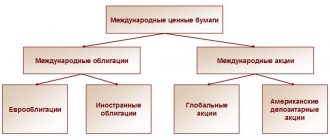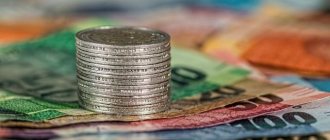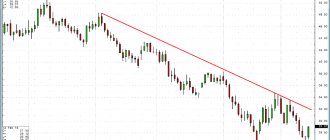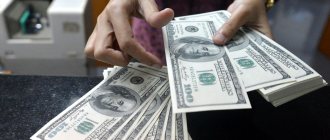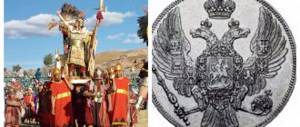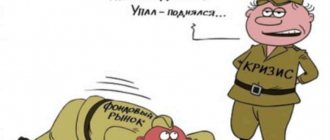- home
- Investments
Evgeny Smirnov
Updated: February 3, 2021
0
Article navigation
- Instruments and methods of investment in currencies
- Is it a good idea to buy currency and keep it at home?
- Where to invest dollars in 2021
- In which currency is it better to invest rubles in 2021?
- Formation of a multi-currency basket
- Conclusion
Despite all the efforts made by the government, the state of the Russian economy still depends on the price of oil futures. In turn, the energy market continues to experience turbulence, so the question of which currency to invest in in 2021 remains relevant for ordinary citizens.
According to forecasts by economists from the Development Center of the National Research University Higher School of Economics, from 2019 to 2021 the economic growth rate will not exceed 1.9 percent. The report clarifies that the current year will be the most difficult, since it is during this year that significant trials will occur. Adaptation to sanctions, falling oil prices and increasing tax burdens pose big risks to GDP growth. Therefore, in order not to lose their savings, the population should take care in advance about where to invest currency and search for the most profitable investment instruments, which we will discuss below.
Instruments and methods of investment in currencies
Investing involves long-term investment of funds in order to make a profit. Typically, the investment period is several years. Before making your choice, you should decide on the most liquid instrument. This will allow you to quickly receive money in case of unforeseen circumstances.
Many Russians consider buying foreign currency as a type of investment. By making such a decision, they try not only to earn money, but also to provide themselves with a safety cushion by maintaining purchasing power in case the ruble depreciates. It is worth focusing on the most stable currencies and, as practical experience shows, it is better to invest in dollars. They are used in international trade, which provides them with additional protection from sudden devaluation and changes in the geopolitical situation.
Having decided on the investment option, you can move on to the next stage - purchase. This can be done in three different ways: at a money exchange point, by opening a deposit in foreign currency, by making currency investments on the Forex market. Let's consider these methods in more detail.
Currency exchange offices. The easiest way to invest in dollars in Russia, available to every citizen to receive passive income. To make a profit, it is enough to wait for the USD exchange rate to rise and exchange them for rubles. Do not forget about the commission of the exchange office, which sells currency at a higher price than it buys, forming its own profit.
Currency deposit. An alternative way to invest in currency and is great for protecting money from inflation and earning interest. In fact, this is a regular deposit, which is no different from a ruble account. As in the first case, part of the capital will be lost as a result of conversion. In addition, the risk of a depreciation of foreign currency is always relevant.
Transactions on the foreign exchange market . The most profitable method of all listed. But greater profits come with increased risks. In this case, in addition to the deposit, you will also need skills in the financial market. Trading currency pairs poses perhaps the greatest risk than buying stocks. Currency rates are influenced by a lot of factors, including: the decision of the Central Bank on the interest rate, macroeconomic indicators, government statements and others. Having studied this instrument, you can profitably invest in euros or dollars and trade successfully.
What does this threaten?
The situation really does pose a lot of risks. Bonds with corporate ratings below investment grade, which are called “junk”, have entered the negative rate zone in significant volumes. On the European market, 2% of the total volume of such bonds have a negative yield. That is, investors buy low-quality assets in an attempt to get at least some return.
In theory, negative interest rates should help stimulate economic activity, but there is a chance that such a policy will have the opposite effect. Because banks hold certain types of assets, such as mortgages, that are contractually tied to an interest rate, negative interest rates can squeeze profit margins to the point where banks have an incentive to reduce lending.
Is it a good idea to buy currency and keep it at home?
Saving money by purchasing foreign currency is a common method that has many supporters. First of all, these are people of retirement age. But every citizen with basic financial knowledge understands that this approach leads to the depreciation of money. For example, according to Rosstat, in 2021 inflation was 4.3 percent. This is exactly how much the purchasing power of people who kept rubles at home fell. To compare, the losses of those who chose investments in currencies, in particular dollars, over the same period amounted to 1.8% - the inflation rate in the United States.
To avoid losses, it is better to invest dollars at a good interest rate in a bank, buying stocks or bonds. Today, financial institutions offer clients from 2.5 to 2.75% per annum. Using simple calculations, you can calculate that by investing $5,000, you can get $125–137 in income within a year.
Where to invest dollars in 2021
Russian citizens traditionally give preference to bank deposits. But you should understand that this choice is not always justified. Banks are commercial organizations that aim to make money. Therefore, they offer clients a fixed low return. For comparison, when opening a foreign currency deposit, financial institutions promise an income of about 2.5%. You can earn much more if you apply currency investing in foreign securities:
- Deposit in dollars – 2.9%.
- US government bonds – 8.2%.
- Shares of public companies (except US) – 10.1%
- Shares of US companies – 10.5%
- Exchange-traded funds – 11.9%.
The numbers above show average annual returns from 1972 to 2013, according to Morningstar. Similar trading is carried out on the Russian stock market. But this segment is still in its development stage, so their choice is somewhat limited.
If we talk about financial instruments, the leader here in terms of assets is ETFs, which have attracted about $4.429 trillion. This instrument is an index fund whose shares are freely traded on an exchange and their price can change during one session.
Often, an ETF follows the structure of a selected underlying index. This eliminates the possibility of traders making non-standard decisions, reducing the risk of losses for investors. They can control at any time how managers manage their money. To do this, it is enough to study the composition of the fund. Investment transparency is another strong argument in favor of ETFs.
The main advantage of the fund is its wide availability. The cost of a share ranges from 10 to 150 dollars. Separately, it is worth noting the low commission. The average is about 0.55% per year. At the same time, one of the largest investment companies Vanguard takes 0.13 percent for management. If you invest a million dollars, the commission will be only 1300 USD.
Like any product, in addition to its advantages, ETFs also have disadvantages. The danger lies in the large number of such organizations. As of October 2021, there were 5,224 funds operating in the world. Naturally, among them there are those that do not bring profitability. It is advisable to carefully study not only the proposed conditions, but also the composition of the fund before making a final decision.
How low can you go?
Banks, it would seem, had an alternative back in 2014 - to keep reserves in the form of cash rather than in ECB accounts. But in fact, this is even more expensive, since it requires costs for transportation, storage, and security.
At the same time, it is obvious that in order to achieve balance in conditions where they are forced, in fact, to pay the ECB for placing their funds, commercial banks began to actively reduce their rates on deposits. But they are limited in these actions.
Why should the public pay banks if there is no direct ban on cash? Hence all the talk about their possible ban. The ECB has already stopped issuing the largest €500 banknote. Nothing will stop deposit holders from withdrawing their funds and storing cash under the mattress. This is fraught with a run on banks (mass withdrawal of deposits), which can lead not only to an increase in interest rates, but also to bankruptcies.
In fact, this is the exact opposite of what negative interest rates were intended to achieve.
This is not to say that the situation is insoluble. Experts from the International Monetary Fund made assumptions about the possibility of introducing electronic and cash separately, that is, not completely banning cash, but imposing a kind of tax on it. However, those who may need it most today, namely the Eurozone countries, may experience more significant difficulties with this than the regulators of a single country.
This will require important changes in the financial and legal systems. In particular, fundamental issues relating to monetary law will need to be addressed and consistency with the IMF legal framework will need to be ensured. It will also require a huge communication effort.
In which currency is it better to invest rubles in 2021?
There is no clear answer to the question of which currency is better to invest in, since it is impossible to determine the exchange rate in the long term.
Officials from the Ministry of Economic Development recommend storing savings of up to 100 thousand rubles in national currency. This recommendation becomes especially relevant against the backdrop of the latest measures introduced by the Central Bank of the Russian Federation under the leadership of Elvira Nabiullina in July 2021. According to the innovations, all investors will be divided into four categories, depending on skills and amount of funds. By saving rubles, ordinary citizens can avoid bureaucratic procedures.
If you want to buy foreign assets, the best solution is to buy several currencies at once, which will become a kind of portfolio diversification and help minimize risks in case of an error. Let's consider the most popular and reliable options:
- U.S. dollars. If you have a choice, it is better to invest in this currency. The US dollar is the world's reserve currency. The whole world must support the American currency.
- Euro. Officially put into circulation on January 1, 2002. During this time, the Russians have already managed to get used to it. But due to the political problems that have beset the European Union in recent years (the economic crisis in Greece, migrants and Brexit), the exchange rate against the USD has dipped slightly, which has reduced the interest of traders in investing in the euro.
- Yuan. The demand for the Chinese national currency is explained by the economic achievements of the Celestial Empire. According to the Federal Customs Service of Russia, at the end of last year, the volume of trade between our countries exceeded $108 billion, which is 24.51% more than in 2021. In addition, China's economy continues to grow, becoming the second largest in the world after the United States. Accordingly, the popularity of the yuan is increasing, which attracts the attention of investors. But before buying, it is recommended to carefully study the news reports, as economists warn of a possible devaluation of the yuan. The Chinese government may take such a step in response to the trade war between Washington and Beijing.
- Cryptocurrency. Only the lazy at one time did not follow the hype around Bitcoin, when within a few months it soared from $10,000 to $20. Traders bit their elbows, calculating the potential profit if they had managed to invest at least $1,000 in the purchase of cryptocurrencies.
There are also a number of other stable and attractive currencies in the world:
- yen (Japan);
- franc (Switzerland);
- pound sterling (UK).
conclusions
Most Russian banks do not open deposits in European currency, so in the future, foreign currency depositors will have to operate with only one asset – the dollar. Refusal to work with euros on the part of clients of the banking structure does not cause them to receive less profit due to low interest rates. If you need to open a euro deposit, you can contact large banks that provide similar services and open a foreign currency account on demand. The main reason why banks refuse deposits in Euros is that the transaction is unprofitable for the financial institution.
Formation of a multi-currency basket
A multi-currency basket consists of three or more international currencies. Such storage of money has its pros and cons, but the main objective of investing in currency is to preserve capital and minimize risks during crises and high volatility in the markets.
The basis of the basket is the US dollar - approximately 50% with minor changes, depending on the situation. Also, about 25 percent should be in eurocurrency. A tenth is allocated to the Chinese yuan. The remainder of the basket is formed from the currencies of other countries. Their set depends on the international situation, as well as the chosen system and investment strategy in the foreign exchange market.
First of all, you should pay attention to such stable currencies as Swiss francs, Danish, Norwegian or Swedish crowns.
You can take a closer look at Australia and New Zealand, which are export-oriented, and the currencies of these countries look reliable.
Where did negative rates come from?
The ECB entered a new reality with its decision at the June 2014 meeting to lower the deposit rate to a negative value of -0.1%. Now it has already dropped to -0.5%. This means that banks that store their excess reserves in an appropriate account with the ECB are forced to pay for their storage, while the usual order of things in the modern financial system involves the opposite situation - that is, bonuses for such placement of funds.
The ECB explained that it took these measures to counter too low inflation, which in those years transformed into deflation for a short period. The classic view of economists is that deflation leads to a reduction in aggregate demand, rising unemployment, falling asset prices and, as a result, a slowdown in economic growth, so monetary authorities try to counter this phenomenon.
In fact, the regulator forced banks to buy government bonds of Eurozone countries. Today the yield on German government bonds is -0.6%. Greece, which a year ago received assistance from the IMF, today can borrow on the market at rates lower than the United States, a country that has a reserve currency, and transnational corporations.
